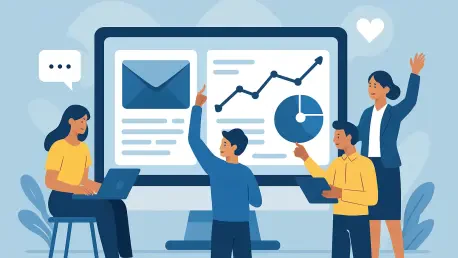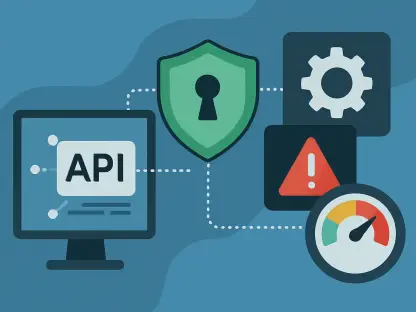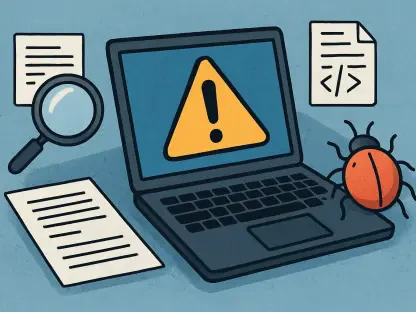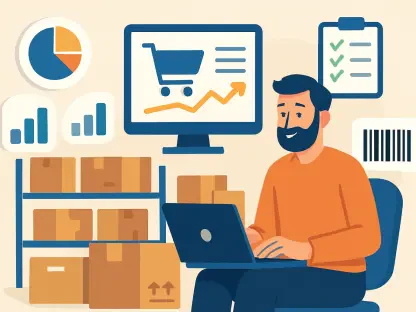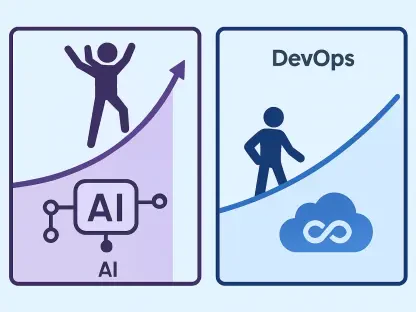In an era where digital interactions shape business success, Software-as-a-Service (SaaS) platforms are undergoing a profound transformation by placing email at the heart of user engagement, marking a significant shift in how technology connects with daily life. No longer just a tool for communication, email has evolved into a central hub where workflows, updates, and actionable insights converge, creating a seamless bridge between software and user. With billions of emails flooding inboxes daily, SaaS companies have recognized the unparalleled potential to connect with users in a space they already frequent. This shift marks a departure from traditional app-centric designs, prioritizing the inbox as the primary touchpoint for interaction. It’s a strategic move that not only boosts convenience but also redefines how software integrates into daily routines. As this trend gains momentum, the implications for user adoption and retention are significant, setting the stage for a deeper exploration of how email is reshaping the SaaS landscape with its unique blend of accessibility and functionality.
The Central Role of Email in User Interaction
Capturing Attention in the Inbox
The inbox stands as a dominant arena for user attention, offering SaaS platforms an unmatched opportunity to engage directly with their audience. By embedding critical workflows such as task reminders, project updates, and actionable reports into emails, these platforms minimize the need for users to navigate multiple applications. This approach capitalizes on the sheer volume of time users spend in their email environments, transforming a routine check into a productive interaction. The result is a noticeable uptick in engagement, as users can act on notifications or summaries without the friction of logging into separate systems. Moreover, this strategy aligns with user habits, making software feel less intrusive and more like a natural extension of their daily digital experience. SaaS companies leveraging this inbox-centric model are finding that it not only enhances visibility but also fosters a stronger connection with users who value efficiency and immediacy in their interactions.
Simplifying Software Through Seamless Access
Beyond capturing attention, email serves as a gateway to simplifying how users interact with SaaS tools, breaking down barriers to adoption. When critical functions are delivered directly to an inbox, the complexity of navigating dashboards or learning new interfaces diminishes significantly. Users can review weekly summaries, approve actions, or respond to prompts without ever leaving their email client, creating a fluid experience that prioritizes convenience. This streamlined access is particularly impactful for new users who might otherwise feel overwhelmed by unfamiliar platforms, as it allows them to engage with software on familiar ground. Additionally, this method reduces the cognitive load associated with managing multiple tools, enabling users to focus on outcomes rather than processes. For SaaS providers, this translates into higher satisfaction rates and sustained usage, as the software becomes an intuitive part of the user’s workflow rather than a standalone obligation.
Automation and Data Driving the Email Shift
Personalizing at Scale with Advanced Tools
Automation lies at the core of the email-first approach, empowering SaaS platforms to deliver highly personalized communications without overwhelming internal resources. Through sophisticated APIs and microservices, these platforms trigger tailored email sequences based on specific user actions, such as completing onboarding steps or generating invoices. This level of customization ensures that messages feel relevant, arriving at just the right moment to prompt a response or guide a user forward. A significant portion of marketers now relies on AI-driven automation to handle a substantial share of their email campaigns, highlighting the technology’s role in scaling efforts efficiently. By automating repetitive tasks, SaaS companies can redirect their focus to refining core product features while maintaining consistent, meaningful outreach. This balance of personalization and efficiency not only enhances user trust but also drives deeper engagement, as recipients receive content that aligns closely with their needs and behaviors.
Optimizing Impact with Innovative Features
The power of automation extends beyond personalization, incorporating innovative features that refine the effectiveness of email communications in SaaS environments. Tools like A/B testing for subject lines and dynamic content insertion allow platforms to experiment with messaging and adapt based on real-time performance data. These capabilities ensure that emails are not just sent but are crafted to maximize open rates and click-throughs, turning each message into a strategic touchpoint. Robust analytics further support this optimization by providing insights into what resonates with users, enabling continuous improvement in communication strategies. For SaaS businesses, this means emails become a reliable driver of user action, whether it’s completing a task or exploring a new feature. The integration of such advanced functionalities underscores how automation transforms email from a static channel into a dynamic asset, fostering loyalty by delivering value with every interaction.
Overcoming Barriers to Email Reliability
Ensuring that emails successfully reach their intended recipients remains a pivotal challenge for SaaS platforms embracing an email-first model. Strict authentication protocols, such as SPF, DKIM, and DMARC, imposed by major email providers, demand rigorous compliance to prevent messages from being flagged as spam or blocked entirely. Many SaaS companies address this hurdle by partnering with specialized transactional email services that monitor key metrics like bounce rates and sender reputation scores. These partnerships help maintain deliverability, ensuring that critical communications—be it a password reset or a billing alert—land in the inbox rather than disappearing into a spam folder. This focus on reliability is essential, as missed messages can erode user trust and disrupt workflows. By prioritizing deliverability, SaaS providers safeguard their ability to connect with users consistently, reinforcing email’s role as a dependable cornerstone of engagement.
Turning Interactions into Actionable Insights
Email interactions offer a treasure trove of data that SaaS platforms can leverage to enhance user experiences and drive business outcomes. Metrics such as open rates, click-through rates, and reply patterns provide a window into user behavior, revealing which messages resonate and which fall flat. This information is invaluable for identifying disengaged accounts, allowing customer success teams to intervene with targeted re-engagement campaigns before churn becomes a risk. Marketing tools also benefit by optimizing send times and content based on engagement trends, ensuring maximum impact. The feedback loop created by this data empowers SaaS companies to allocate resources more effectively, focusing efforts where they yield the greatest return. As a result, email transcends its role as a communication medium, becoming a strategic asset that informs decision-making and fuels growth through continuous refinement of user interactions.
Reflecting on the Human Touch in a Tech-Driven Shift
Balancing Innovation with Personal Connection
Amidst the technological advancements propelling the email-first movement, the importance of maintaining a human touch in communications cannot be overstated. SaaS platforms that succeed in this space craft emails that feel less like automated broadcasts and more like conversations with a trusted colleague. Subject lines are designed to intrigue, content is tailored to address individual needs, and calls to action invite engagement rather than demand it. This personalized approach ensures that users perceive value in each message, fostering a sense of connection despite the underlying automation. Rigorous testing and iteration of email templates further refine this balance, treating them as integral components of the user interface. By prioritizing relevance and warmth, SaaS companies transform emails into meaningful touchpoints that resonate on a personal level, proving that technology and humanity can coexist to enhance user satisfaction.
Crafting Emails as Extensions of User Experience
The design of email communications in SaaS platforms goes beyond mere delivery, aiming to integrate seamlessly into the broader user experience. Every element, from tone to timing, is meticulously considered to ensure that emails serve as natural extensions of the software itself. A well-crafted message can guide a user through a complex process with clarity or spark curiosity about a new feature with a compelling prompt. This thoughtful construction turns emails into active components of the product, blurring the lines between inbox and app. Such attention to detail elevates the perceived quality of the software, as users encounter consistency and care in every interaction. For SaaS providers, this means emails are not just tools for communication but vital opportunities to reinforce brand identity and build lasting relationships, ensuring that each message contributes to a cohesive and engaging journey for the user.
Looking Back to Shape Tomorrow’s Strategies
Reflecting on the journey of email within the SaaS domain, it has become evident over time that what started as a basic communication channel evolved into a fundamental pillar of user engagement. Companies adapted by embedding essential workflows into emails, harnessing automation to personalize at scale, and tackling deliverability challenges with specialized partnerships. Data from email interactions provided critical insights that shaped user experiences, while a commitment to human-centered design ensured messages resonated on a personal level. This multifaceted approach redefined how software connected with users, turning the inbox into a hub of productivity and trust. Moving forward, SaaS platforms should continue to innovate by integrating emerging technologies like AI to enhance email dynamism, while never losing sight of the personal touch that builds loyalty. Exploring new ways to balance automation with authenticity will be key, as will maintaining rigorous standards for deliverability to sustain user confidence in this evolving landscape.
